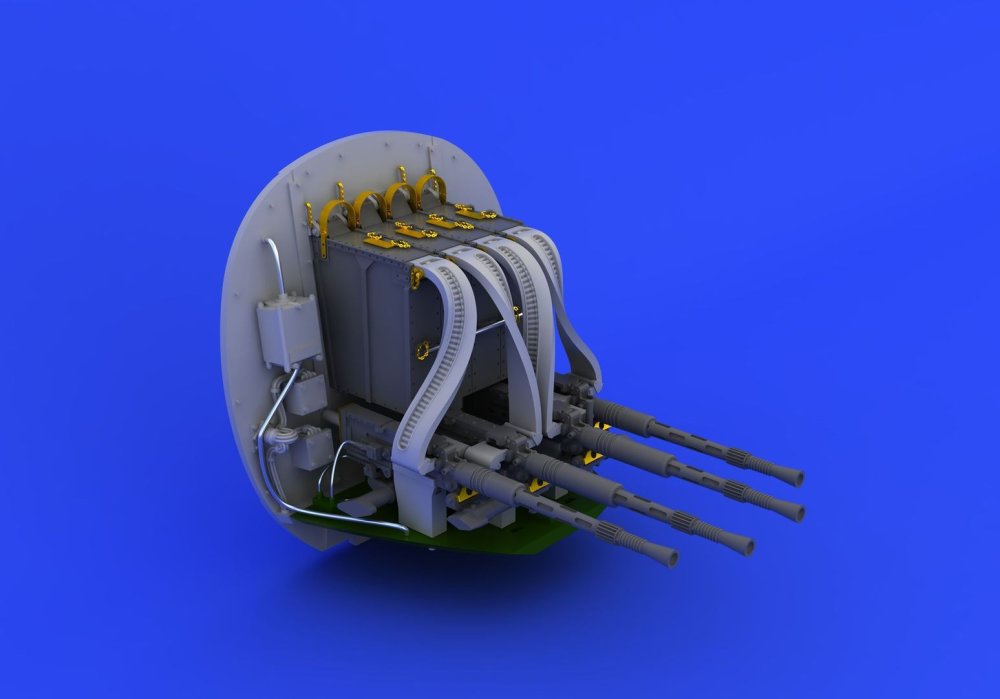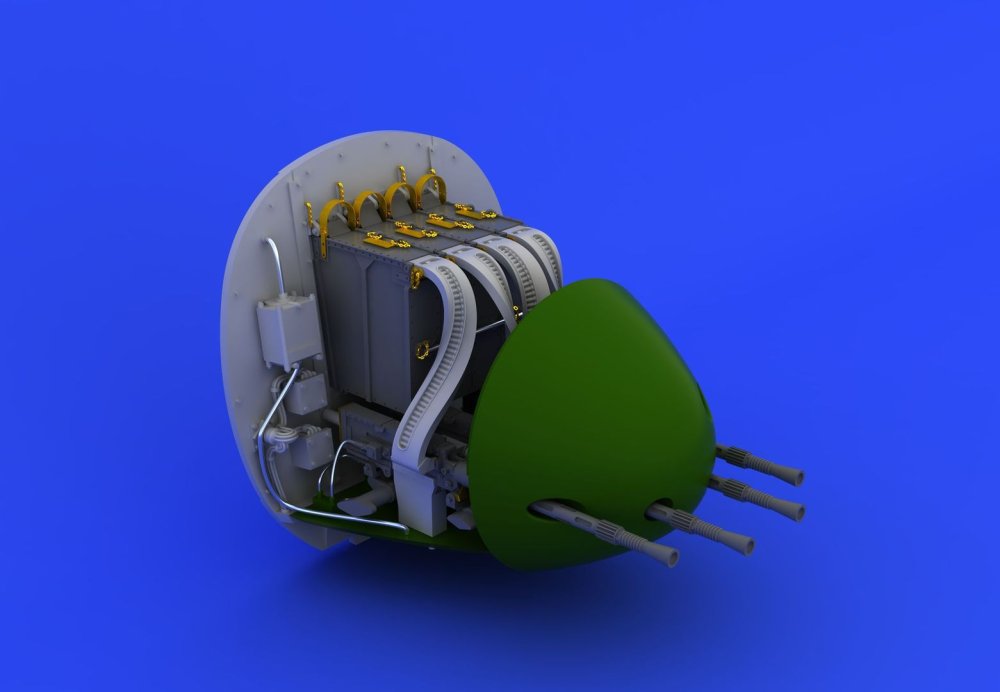-
Posts
3,257 -
Joined
-
Last visited
Content Type
Profiles
Forums
Events
Gallery
Everything posted by James H
-
It's been a very long time. At the moment, I'm working towards completing the hull of my 1:64 HMS Indefatigable, prior to masting and rigging, and I know that when she's complete, I will have further prototype work to do, but......that then won't stop me doing some prep work on something else. My plan is to finally build my 1:32 Tamiya Mossie that was kindly donated for the cause.That will be supplemented by just about every Eduard set you cab imagine (interior, exterior, engines, cockpit, gun bay etc.). I also want to do this in an unusual scheme. My question here is what scheme do I use? This needs to be something either unusual, or a regular scheme of a machine that had an important service history. I am also open to other suggestions with details. Is there a really nice pre-painted/printed IP around? I will come back to this topic over the next couple of months or so to add stuff I find useful and to get any suggestions from those that might've built this one before. Just bear with me with this.
-

1:64 HMS Indefatigable (1794) - prototype for Vanguard Models
James H replied to James H's topic in Non LSM 'WIP
...continued: Gun port lids. Very straightforward. The channels are made up from three layers, so look more realistic. The edges of these were rounded/chamfered as per the real thing. The reworked figurehead is complete! And here is my work so far on the 24' cutter, which is still ongoing. Many are already familiar with the construction of these little boats. Until next time. -

1:64 HMS Indefatigable (1794) - prototype for Vanguard Models
James H replied to James H's topic in Non LSM 'WIP
Update time. As you've seen recently, I've been doing the coppering using 6mm tape, cut into 18mm lengths. It's a little tedious, but perhaps less so that using PE, and it's also a little quicker. I coppered the hull in around 4 less than full days. There's no double banding on this.....just complete from keel to waterline. When all done, the copper was buffed down using cotton buds. The coppering was added above the slightly (and intentionally) lower waterline I added in silver pencil onto the black hull. I figured that adding a good two levels above that would be a reasonable indicator of 'enough'. It was as planned. With the copper added, I set the waterline tool again so I could draw along the copper plates this time. It needs to be remembered the the stern of this sits a little lower in the water than the bow, with the waterline increasing in depth from around 90mm to 95mm, bow to stern, along the full hull length.....so not parallel with the lower keel. With that done, I ran a fresh scalpel along the whole pencil line and peeled off the excess above the line. The keel and stern edges were then coppered too. The rudder is a very simple affair. I'm actually coppering this at the moment, but don't have those photos yet. The headrails are built up from various laminates of pear, and there are other single piece rails. All have engravings which must be painted in ochre, whilst the main colour is obviously black. -

1:64 HMS Indefatigable (1794) - prototype for Vanguard Models
James H replied to James H's topic in Non LSM 'WIP
I'll do a proper update this weekend, but here's a quick phone photo of the coppered and trimmed hull. Other work I've been doing is finishing up the 24' cutter, painting the timberhead rails and building channels...as well as many other things. She will come together pretty quickly, but I do need to protect this copper from tarnishing. -

1:64 HMS Indefatigable (1794) - prototype for Vanguard Models
James H replied to James H's topic in Non LSM 'WIP
I'll do a proper update in a few days, showing coppering, but until then, here's a photo showing the work so far. Coppering is a fairly quick process, thankfully, and fairly therapeutic. -

1:64 HMS Indefatigable (1794) - prototype for Vanguard Models
James H replied to James H's topic in Non LSM 'WIP
Ok, I have a reworked figurehead to reflect the bronze/gold armour, instead of the silver steel from the previous incarnation. -

1:64 HMS Indefatigable (1794) - prototype for Vanguard Models
James H replied to James H's topic in Non LSM 'WIP
Time for an update here. The hull was varnished and sanded back a couple of times, helping to seal any open grain before applying paint. This was instead of using a primer, which you can of course use. Yellow ochre was then applied. I used Humbrol Linen as I wasn't in possession of the VM acrylic paint at the time. This paint was airbrushed over the hull and rubbed back successive times over a week or so, to make sure I'd got it right and it looked reasonably homogenous. The reason for painting all of this in ochre was that it's easier to see any fault areas that needed fixing up, before applying black paint. The hull was then painstakingly masked off before applying black. It's always tricky cutting a mask line across the longitudinal rail, and this took a few bits of touching up to get right. The effort is worth it though. The rails were also then painted in ochre and the gun ports touched up again after ochre overspray. I used a Prismacolor silver pencil to add a waterline on the hull, and made sure this was a few millimetres below the eventual one. The plan is to then use that as a guide and copper above it. Once coppered, I'll add another regular pencil line at the correct height and score a line along it before removing the copper tape above the waterline. A 50m roll of 6mm self-adhesive copper tape is included. This is reduced down into 18mm lengths. It sure does take some time, so I recommend a tool like this for making them. Each plate is exactly the same length and with perfectly square ends. Ok, it's about time to start coppering this hull... -

1:64 HMS Indefatigable (1794) - prototype for Vanguard Models
James H replied to James H's topic in Non LSM 'WIP
Before I glue the roof into place, it needs to be tested against the gallery once the outer skins are added. WIth those glued into place, the roof is finally trimmed to size and also glued to the model. On top of that is the pear cap which will slightly overlap the shingles that will later be fitted. The pear parts that make the lower galleries are now shaped and fitted. Time to fit the outer stern panel and quarters. I highly recommend you use CA for this so there's no curling of the parts. These are then shaped and the gallery/stern area given a finishing sanding to even up all edges etc. And lastly, the engraved upper stern is fitted and then also sanded into the rest of the hull. More next time... -

1:64 HMS Indefatigable (1794) - prototype for Vanguard Models
James H replied to James H's topic in Non LSM 'WIP
Another update as at least it's now looking a little different. Well, like it or not, the cabin areas now have to be decked over and here you see the beams in the fore cabin area, including the timbers for the original position of the skylight. This was likely moved rearwards when razed. And here you see the new skylight position over the main cabin, which sort of does make much more sense as that area can now be subject to some direct down sunlight. With all beams in place, the 0.8mm laser-engraved ply sub-deck is now installed, notched into the protruding bulkhead ears that you can see. With the poop deck now installed, it's time to turn attention to the quarter galleries. This always gives a hull some character and definition. Here you see the frames, now painted, being glued to the indents on the rear of the hull sides. The inner stern panel can now be fitted, as well as the counter. As with Sphinx, the quarters are sheathed in two layers of timber with the upper parts creating a recessed frame. Here are the inner skins for the galleries. And here is the stern up to this point. Three MDF layers are used to create the roof, except for a pear caping piece that's fitted soon. These will eventually be painted black and covered with laser-cut shingles. The reason for the layers is that it makes it easier to sand to the correct angles as you temporarily sit them on the hull side. After fettling, the finished roof will look like this. -

1:64 HMS Indefatigable (1794) - prototype for Vanguard Models
James H replied to James H's topic in Non LSM 'WIP
I re-took the photo of the cabin area as there was too much glare on the deck and the background was dirty. So, here it is. -

1:64 HMS Indefatigable (1794) - prototype for Vanguard Models
James H replied to James H's topic in Non LSM 'WIP
The cabin walls and internal cabin screen are now painted, and the screens fitted out. I can finally glue into place the cabin walls, screens and partition. Note the eyelets are added to the ports and floor. Did I say this came with a cabinet? No? Well, it does, and this is now fitted into place. The carronades in this area differ from the others as they will retract into hull during the hull painting process. They can be rolled out into position when that job is complete. These are now fitted to the cabins area. Time for some furniture and maps too. Hope you like the work so far. Onwards!! -

1:64 HMS Indefatigable (1794) - prototype for Vanguard Models
James H replied to James H's topic in Non LSM 'WIP
This is my weekend update time as I'll be working flat out from this stage to get the upper deck work done. Getting the cabin built and fitted out seemed like a good time to post. The first thing that's to be done is to fit the vertical face for the benching in rear of captain's office. With that fitted, the parquet floor is added. This is supplied in card and it looks nicer than the maple version, and a cool contrast. Titebond is used to fit this. The remainder of the rudder housing boxing is then completed. The bulkhead screens are supplied in two 0.6mm engraved laminates. Instead of using wood-curling white glue, 3M Spray Mount is used. The parts are lovely and glass flat. The outer bulkhead screen is fitted with laser-engraved columns. The inner bulkhead screen and the partition wall are temporarily fitted so that the engraved maple floor sections in that area can be trimmed to size. Once they are done, the floor sections are glued into place and the screen and partition removed until later. This picture will give a good idea about the post design process that I am engaged in when building the production prototype. I will invariably find a small number of things which needed amending. This is either because it was missed during the initial cut build, or because something in the design was changed and a small number of affected areas may have missed an update. Here you see the cabin side wall and the changes made from the initial part. That includes shifting details by 2mm to align gun ports and also packing out the rear to cater to the lowered cabin shelf. Hey, at least we can show you how we do this as a tag-team! I temporarily fit the cabin walls and the screens so that I can draw a demarcation line to guide me for painting the cabin interior. -

1:64 HMS Indefatigable (1794) - prototype for Vanguard Models
James H replied to James H's topic in Non LSM 'WIP
Ok, just an interim update. I was going to leave this until weekend when the office was installed, but I may as well show the upper deck being fitted and prepped for further work. Indy will be supplied with deck planking material as standard. At the moment, this looks like it will be red alder, which is gorgeous. I have some here that I'll do a couple of stages showing how to present it, assuming the modeller will have a good idea already. Indefatigable isn't marketed at modellers who are novices or intermediate. This is an 'Advanced' level kit in VM's new 5-point kit categorisation. More on that when it's released. What you see here are the standard ply sections which are laser-engraved so you have something as a planking guide. This is where checking the lay of the deck beams really does pay off. This deck is fitted in halves, unlike the main deck, simply as it's a more complex item. With everything test fitted and dry run several times, the deck beams have glue added to them and the deck is slotted into the outer bulkhead ears. Weights and clamps are then used to hold things down until dry. The 2 inch clamps are perfect for this, especially the cutouts where the front end clamps the joint and the clamp tail holds down the opposite side. And then the other deck half is fitted in the same way. There is a little more internal fairing to do, but this is easy enough. This is where the cabin walls will be installed and I need to make sure there's no bumps anywhere. And while this seems drastic, these frames DO need to now be removed as the next build stages will incorporate engraved inner bulwarks which glue onto the the sides. The forecastle bulkhead ears are now history too. -

1:64 HMS Indefatigable (1794) - prototype for Vanguard Models
James H replied to James H's topic in Non LSM 'WIP
A very brief update before the weekend one. The office furniture has been painted by a friend of mine, and here it is. The round table will not be included with Indy, but the other table will, along with a couple of chairs. Here you can see a couple of incarnations of the furniture, 3D-printed and painted with oils. My friend also added the navigation charts for some extra effect! These items, including the round table are available already though. https://vanguardmodels.co.uk/product/cabin-furniture/ -

1:64 HMS Indefatigable (1794) - prototype for Vanguard Models
James H replied to James H's topic in Non LSM 'WIP
Included in the kit will be a set of optional lodging and hanging knees. It'll be up to you if you want the extra work, but for the manual, I have to take one for the team! These are the hanging knees. The truncated ones are the parts that will be fitted where the gun port would otherwise be obstructed by the longer part. Of course, each part also needs to be specifically shaped to its position. Plenty of spares are supplied. Here they are fitted, along with the lodging knees. And the fore deck beams are now added, with the optional knees also installed, followed by the boat beams. These also have optional knees. And here she is so far!! -

1:64 HMS Indefatigable (1794) - prototype for Vanguard Models
James H replied to James H's topic in Non LSM 'WIP
Time for another update. This was something I was looking forward to doing. Not covering up all that work I'd just done, but to turn a corner and be able to do it all again for the next layer in the Indy cake. Before I did that, I needed to add the scale-sized cannonballs to the shot garlands. These are done with liquid CA and some thin-ended paddle tweezers that won't knock the previous ball glued into place. And with that, it's onto the beams. As the upper side will have some timber showing through the deck cutouts, these were totally cleaned of char. The whole upper face was cleaned also because they look much better for the instruction photos. There are two lengths of pillar, depending on whether they sit on a deck or on a grate coaming. All deck beams were painted red, except for the upper side and all the slots. The beam ID is engraved on each beam and this ties in with the engraved number of the deck beam sill. The beams are now slotted and glued into position. Those beams that are supported are continually test fitted with a pillar before being finally glued. Also important to make sure the pillar doesn't push the beam higher than was intended. A steel rule checks this as I go. The forward beam for the quarterdeck is not only shaped in profile, but also curved across its length. To create this, the beam is made from laminated pear parts, glued together over a jig. When this is dry, the part is cleaned up and fitted into place, sitting atop two of the bitts. -

1:64 HMS Indefatigable (1794) - prototype for Vanguard Models
James H replied to James H's topic in Non LSM 'WIP
And more... Knees(?) now added, as well as a painted brick floor for the stove. And the gun carts now have some colour applied to them, as well as ironwork and wheels. Remember, these won't be fitted with barrels until the model is more or less complete. Capstan finally done. As are the hand pumps. No one wants to walk down stairs without a safety rope around them! And the stove makes an appearance. And this is Indy up to date. Back in the shipyard tomorrow -

1:64 HMS Indefatigable (1794) - prototype for Vanguard Models
James H replied to James H's topic in Non LSM 'WIP
Ok, major update time! I've actually had a lot of subassemblies ready for a while, as this log shows, but now it's time for adding them in. What I haven't shown here is the spirketting that I added and fitting the eyelets to the inner bulwark gun positions. You'll have to wait until manual is finished for those! I've had to take about 100 photos these last days and sequence them, with the ones I took ages ago. Ok, first paint is for the coamings, after masking off the garlands and glue area for grates. Coamings now fitted without grates as they are more flexible for deck curve. I've probably posted this pic before, but this just shows that the ladders are now being fitted, along with the grates. I pre-assembled the bitts etc in situ, then removed them when dry before painting. These are now added into place for the last time. -

1:64 HMS Indefatigable (1794) - prototype for Vanguard Models
James H replied to James H's topic in Non LSM 'WIP
Ship's stove. I know I did the for the VM web-shop but this one is now printed in 8K resolution using a different resin which is tough. There are two PE frets with this stove, with a few spares for things like pulleys and eyelets etc. The stove assembly is the same as the one in the shop, but here are some pics of the work. Tamiya fine primer was used on the stove, followed by Tamiya Flat Black. The stove was then weathered with Uschi van der Rosten steel pigment. At this stage, the chimney and pipe are only sat in position. They'll be glued to the stove later in the build. -

1:64 HMS Indefatigable (1794) - prototype for Vanguard Models
James H replied to James H's topic in Non LSM 'WIP
Tiny update as I am doing a few other things in other build areas of Indy too. I now have some colour on the model. I first varnished the exposed strip on the inner bulwarks and then used masking tape before I added paint. For this, I used some Plastikote Red Oxide (same as on the lower fisher hulls) and decanted it from the aerosol so I could airbrush it. The paint was left to de-gas for a few hours. That's important as it'll boil if you try to use or do anything with it when fresh from the rattle can. The paint was then thinned with mr Levelling Thinner, about 60:40 paint to thinner. When completely dry, I airbrushed Tamiya Flat Red over the red oxide. After more judicious masking (and masking the ports off from interior), I did the same paint regime for the gun ports. Once dry, everything was unmasked. The standard kit will be supplied with Red Alder for deck planking. This is a beautiful timber. However, for this, I am using an engraved maple veneer deck. There will be an option for a maple deck, but it's an actual maple deck, not veneer. Fitting the deck will be the same as for this, with a subtle flex and sliding into the rear first, underneath the stern timbers. First though, a test fit should be done and the edges sanded so it lies flat to the bulwark edges. The deck was then glued down and left to dry. In the meantime, the main gu deck coamings were masked and airbrushed in Tamiya Flat Black. The grates will be added after the coamings are fitted, so to reduce rigidity when fitting. More soon(ish) -

1:64 HMS Indefatigable (1794) - prototype for Vanguard Models
James H replied to James H's topic in Non LSM 'WIP
This update shows the basic external finishing of Indefatigable, and at this stage doesn't include the numerous rails etc. that make up the side bulwarks. That's for later in the build. After a LOT of sanding of the second pear planked layer, the gun ports were opened up to their correct size at last. Before using some custom-made sanding sticks for the job, the inner bulwark port openings were trimmed down more or less to the size of the port itself. The sanders were then used to finally clean them up and even out the internal areas. A sharp scalpel was then used to square up any corners properly. If you remember, the first pear plank was laid to be in the exact same position as the the upper strip of the wales. Here you can see the mark that indicates the flow of the plane at the prow. The top also aligns with the top of the prow, so that makes it easier! A 4mm wide strip of 1mm pear is now run from the prow to the stern, following that plank line. I used CA gel for this as I didn't want to use any pins on this area. I've left the plank overlong at the rear so you can see where it runs to. The last two gun ports are also partially obscured by the strip. Now, three 5mm wide pear strips of 1mm thickness are run directly underneath the 4mm strip, again with CA gel. Once in place, I masked off the area on both sides of the wales and sanded the wales smooth. You'll note that I tapered the lower two planks towards the bow, and the lower one plank at the stern. The gun ports are now cut into the wales, and the wales are finally shaped at the stern. These are shaped from the curve of the stern lower counter, and rounded into the underside of the wale. Indy now looks like this. The next update will show some internal work underway. -

1:64 HMS Indefatigable (1794) - prototype for Vanguard Models
James H replied to James H's topic in Non LSM 'WIP
This is only a mini-update as I've been away on holiday. This shows the hull up to completion of second planking, but I have started on sanding this smooth, which will be seen in next update when I've added the wales and done some other stuff. The plan will give a position below each gun port, where a mark will be added. It's here that a plank will be run, from stem to stern. It also gives a nice reference to the upper wale strake which will lie directly over the top. The hull is now sheathed in pear. Sanding begins. -

1:64 HMS Indefatigable (1794) - prototype for Vanguard Models
James H replied to James H's topic in Non LSM 'WIP
Just checked stern windows - there will be options for open or closed... -

1:64 HMS Indefatigable (1794) - prototype for Vanguard Models
James H replied to James H's topic in Non LSM 'WIP
The rest of the keel is now added, and then the rudder post is fitted with its engraved facings and installed. This part sits into the notch in the keel and pushes tight up against the inner stern construction. No clamping needed! The rest of the keel and prow engraved facings are added and copiously held with clamps. You can never, ever have enough of those. The second layer of timber starts by fitting the outside forecastle bulwarks. When these are dry, the gun port blanks are removed and the hull starts to transform a little. The rear outside bulwarks are now to be fitted. The quarter gallery frames are temporarily clamped into place and the parts glued. Note that I've remove the blank in the fore gun port hole. The lower, outside counter is now glued, clamped and pinned in place. Indy now looks like this. ☺️ Until next time. -

1:64 HMS Indefatigable (1794) - prototype for Vanguard Models
James H replied to James H's topic in Non LSM 'WIP
Let's bring this up to date. Another element that needs to be temporarily fitted is the shelf that sits in the rear of the day cabin, encompassing the rudder housing.This piece slots into the stern timbers and needs to be pushed the whole way in so the whole protrusion will stick out at the back. That is then sanded flush with the stern. To make sure the placement of all stern parts is exact so the rails run around the rear and onto the quarter galleries, it' VITAL that we work from the top, downwards. The main, inner stern is first temporarily clamped into place. It pays off to get this in exactly the right position. When it is correct, the stern will be 2mm above the bulwark, and the inside edge of the outer window will sit flush with the quarter gallery frames that are also clamped into place. The bottom MDF quarter gallery frame will also angle in line with the bottom of the stern. Lastly, the shelf we fitted just earlier, should sit slightly below the height of the lower window frame. It's a lot to adjust, but trust me, this is the best way of doing it. The middle counter is now positioned directly underneath this. Some bevelling is done to make sure it fits snug against the upper stern. The bottom edge of this part will sit at the point where the stern flows into the lower curve. If it doesn't, this part can be trimmed slightly. Pins are now used to hold this in place. Again, NO GLUE! The bottom stern counter can now be fitted. This was first soaked and allowed to dry around a tin so that it had a gentle curve that would take the strain off the next task. The counter is pushed up directly underneath the middle counter and the bottom edge of this part is marked with a pencil. My prototype varies very slightly to the production kit, and that will be reflected in text in manual. I now cut along the pencil line and remove the planking from above that line. The lower counter is now glued and pinned and into place. The upper parts are now removed as adding them at this stage will mean they'll get snagged. The lower counter is now shaped into the hull. The prow underwent its third revision to cater to the figurehead, and this new part was now glued into place on the hull. Next, the lower keel parts are added...


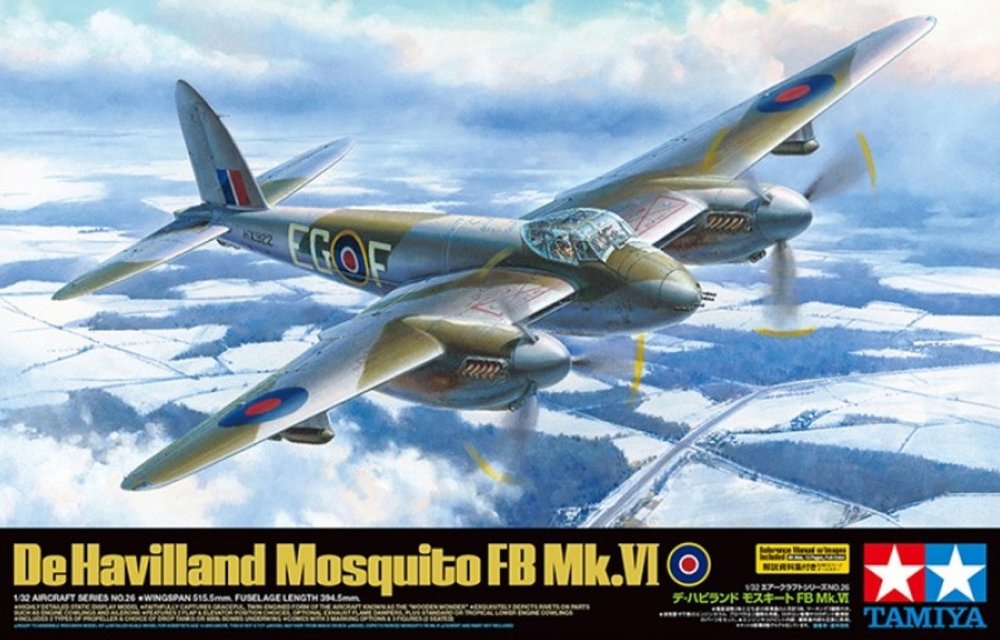
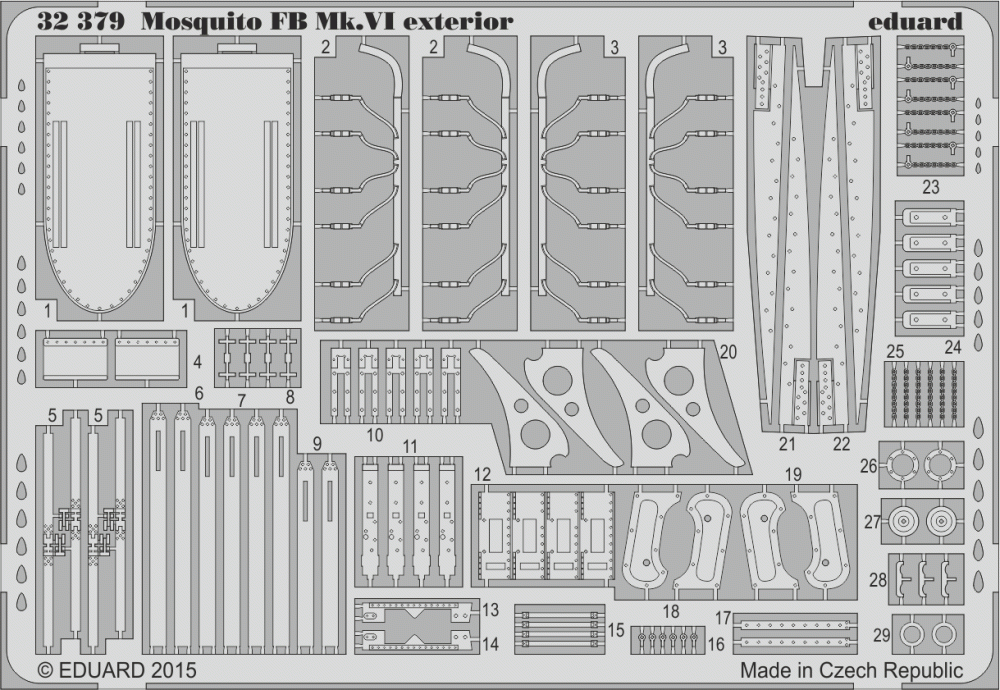
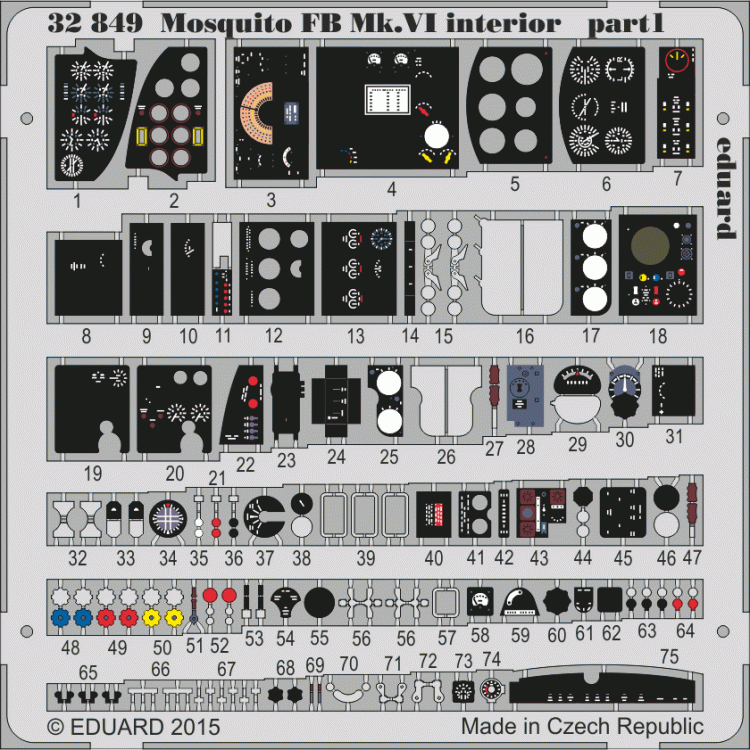
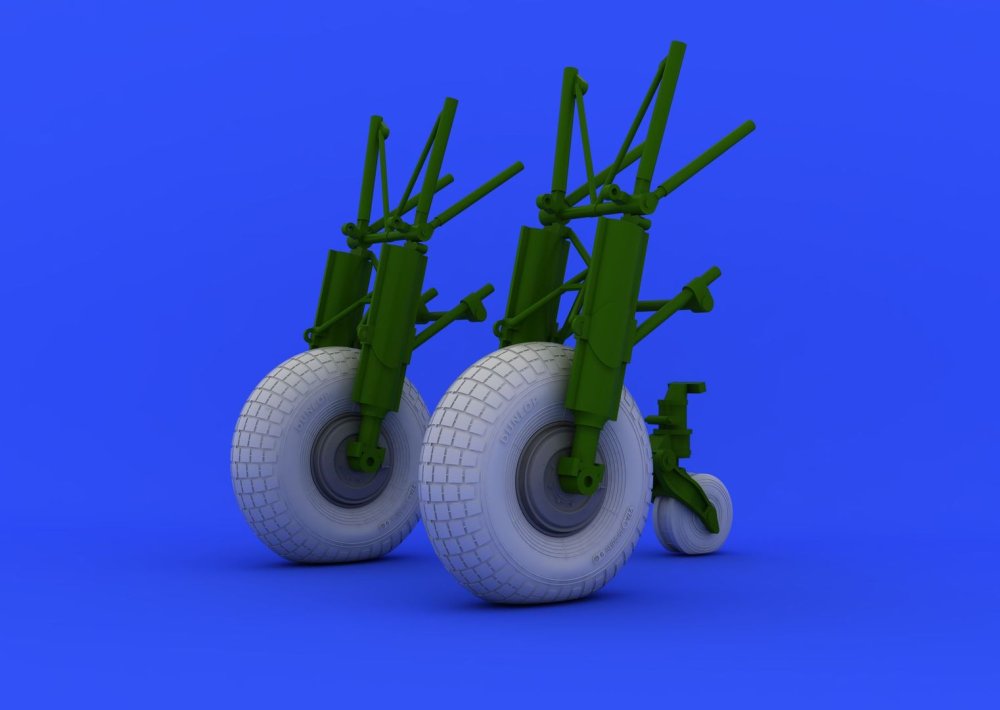
_z1.thumb.png.dbd80ea640ed3457ab536c28142b87d6.png)
